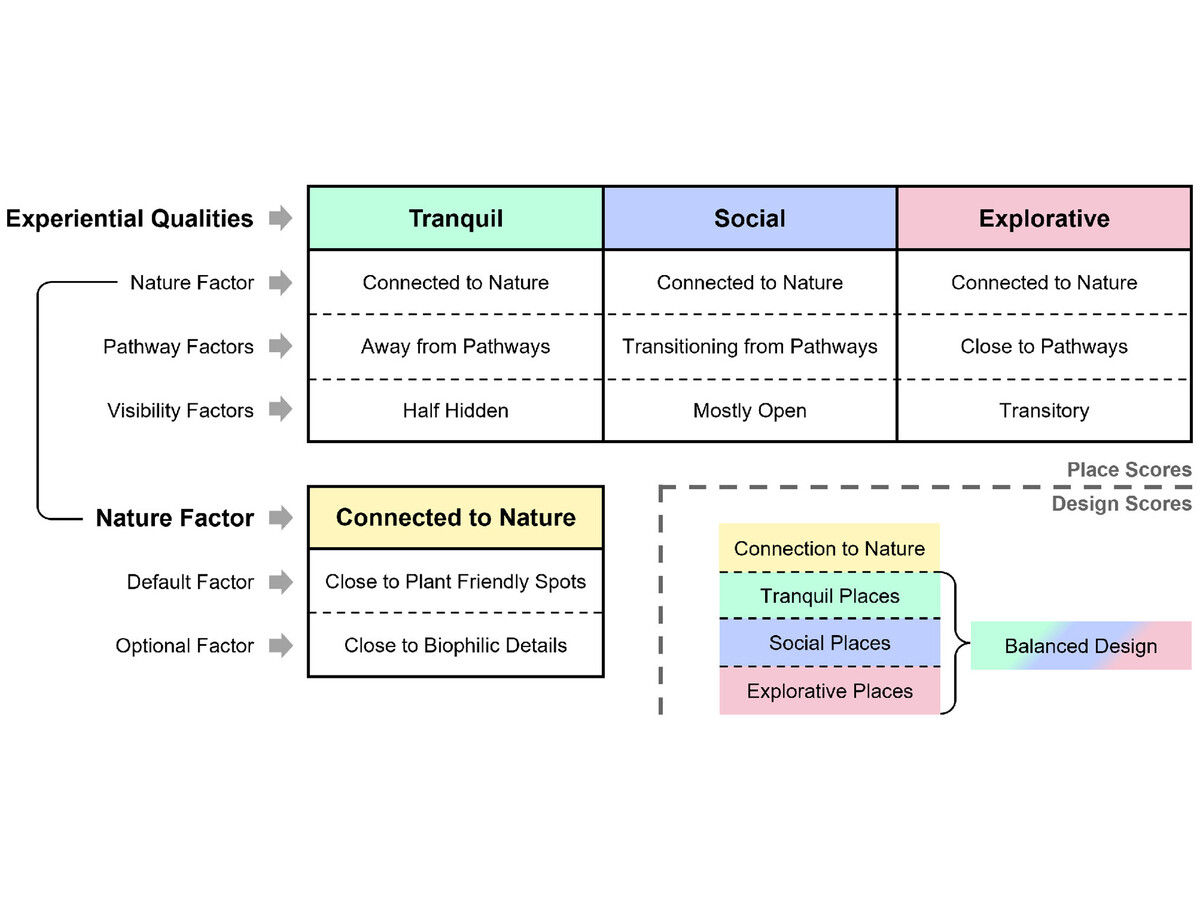tl;dr: The paper proposes a computational method to score how tranquil, social, or explorative spaces feel by combining daylight, pathways, and visibility data. Tested on 20 apartments, it found people rate spaces uniformly while the algorithm detects variation, with stronger alignment among experienced participants.
Various aspects of buildings and cities appear to positively influence human wellbeing, and spatial analysis offers a means of quantifying those factors so that they can be maximized during the design process. Although it is simplest to assess each design factor independently, people's everyday experience in the built environment appears to be a product of a combination of factors. We therefore propose a computational framework in which design factors pertaining to daylight, pathways, and visibility are evaluated using spatial analysis, and then the results are combined to score the tranquil, social, and explorative experiential qualities of places in habitable buildings. An implementation of the framework is applied to 20 models of residential apartments, and the resulting scores are compared to an analogous set of ratings obtained via a crowdsourced online survey. We observe that human evaluators tend to assume relatively uniform experiential qualities within each space of each apartment, whereas our algorithm often predicts a gradient of highly tranquil, social, and explorative places even within the same room. We also observe that the overall apartment ratings from the survey and the design scores from the algorithm were more strongly correlated when considering only the more experienced participants' ratings; however, a follow-up study would be needed to confirm this trend. This exploratory research contributes to a broader discussion about the importance of studying design factors in combination with one another, the challenge of validating the resulting composite metrics, and the role that theoretical best practices might play in the development of experiential space analysis tools for architects and urban designers striving to promote wellbeing.
